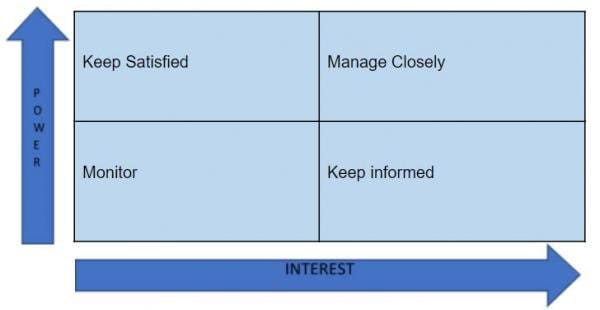According to the PMI Guide to Business Analysis, “A stakeholder is an individual, group, or organization who may affect, be affected by or perceive itself to be affected by a decision, activity, or outcome of a project, program or portfolio.” Stakeholders can be internal or external to the project and include the project sponsor, project team, customers, and suppliers. If certain stakeholders are not managed effectively during a project, there is a risk that it may be stopped. Stakeholder Engagement is defined as ”the process by which an organization involves people who may be affected by the decisions it makes or can influence the implementation of its decisions.” We’re covering how to identify stakeholder, analyze stakeholders and engage stakeholders.
3 Steps to Positive Stakeholder Engagement
The following three steps can be implemented during business analysis initiatives on a project to maintain positive stakeholder engagement.
Step 1: Identify stakeholders
Identifying stakeholders is a process of identifying all affected people or organizations throughout the project life cycle and documenting information regarding their interests, independencies, influence, and the potential impact on project success. It involves determining who is impacted by the project, what their interests are, whether the stakeholders are internal or externals and who are the most important ones. The process to identify stakeholders also involves the use of tools such as brainstorming, expert judgment, and documentation review as well as lessons learned from previous, similar projects to identify who are the project stakeholders. The output of the process is a Stakeholder Register which identifies the people, groups, and organizations that have any interest or involvement in the project and includes names, titles, roles, interests, power, requirements, expectations, and type of influence, etc. The involvement of stakeholders on a project may include sponsorship of the project, confirmation of business requirements, approval of project documents, and testing of the deliverables.
Step 2: Analyze stakeholders
The next step is to put together a detailed stakeholder analysis with the team that is involved in the project. Stakeholder analysis is used to identify stakeholders and to assess interests, positions, alliances, and importance given to the project by the stakeholders. Such knowledge allows business analysts to interact more effectively with stakeholders and to obtain their support. Conducting such an analysis before the project starts, “allows project managers to detect and take measures to avoid misunderstandings and potential opposition to the project” (Bright Hub Project Management). It’s important to identify and examine key factors such as proximity to the project, demographics, interest in the project, needs and concerns, expectations of the project, and any previous project communications. Stakeholder’s interests can be used further, criteria such as whether they are resistant, neutral, and supportive with respect to the initiative. The Power/Interest Grid shown below is a simple tool that helps to categorize and analyze stakeholders based on their increased power and interest in the project and helps to focus on the stakeholders who can make or break the project thereby prioritizing the stakeholders e.g., stakeholders that lie in the Manage Closely quadrant can contribute towards project failure if they are not managed properly during the project.
Step 3: Manage stakeholder expectations
It is also important to plan for stakeholder engagement upfront by articulating management strategies to engage them. Different stakeholders have different opinions as to how the project will benefit them; hence it is important to understand and document those expectations. It is therefore important to meet the stakeholders regularly and update them on the progress of the project. Effective communication ensures that stakeholders receive information that is relevant to their needs and builds positive attitudes towards the project. Investment in careful planning before engaging stakeholders will, therefore, bring significant benefits in the future.
The communications management plan can be used to define the communication requirements for the project, how information will be distributed, the frequency of distribution, the level of details and format, and who is responsible for communicating with stakeholders. Communicating with the stakeholders early and often and including reporting on progress will ensure that they fully understand the initiatives and the benefits; hence they can be more actively supportive in the future.
Other important documents such as the Issue Log can also be used to record and manage and communicate on all the issues related to the project.



